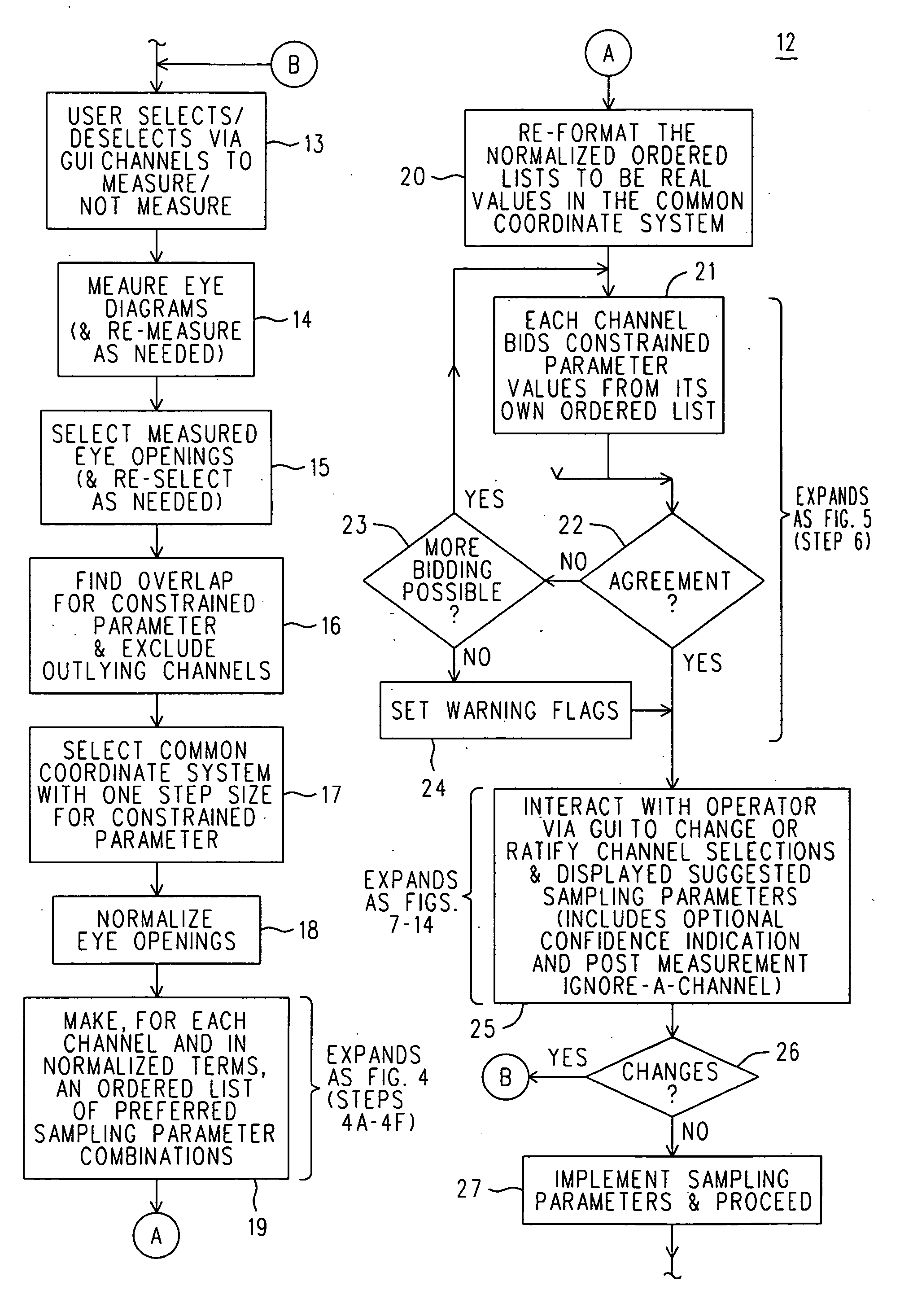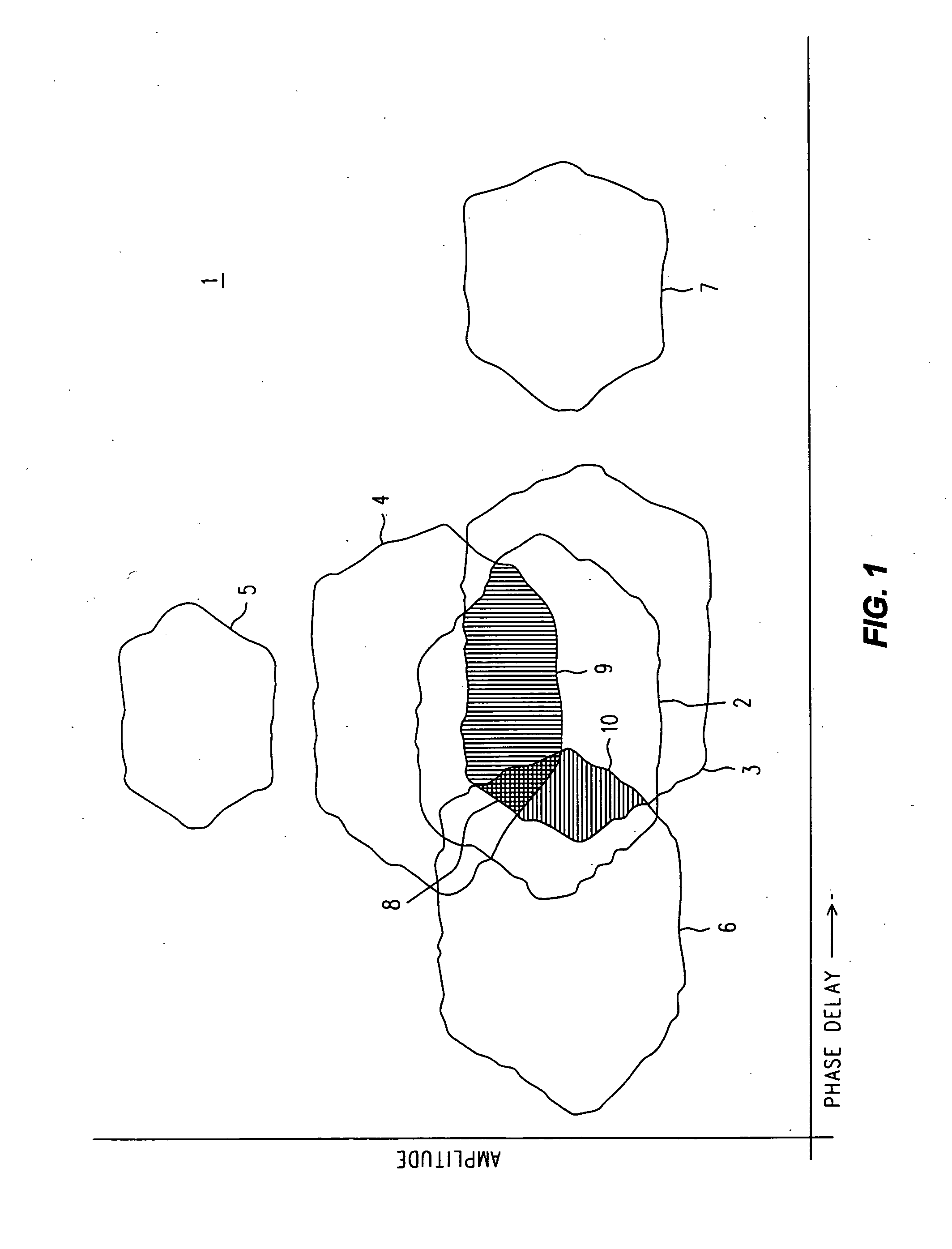User interface for selection of sampling parameters in a logic analyzer whose data receivers are in groups each having a separate threshold that is common to the channels within each group
- Summary
- Abstract
- Description
- Claims
- Application Information
AI Technical Summary
Benefits of technology
Problems solved by technology
Method used
Image
Examples
Embodiment Construction
[0053] Refer now to FIG. 1, wherein is shown a simplified representation 1 of a collection of eye diagram eye openings that is a useful point of departure for the discussion that follows. We have suppressed the actual eye diagrams themselves in favor of simply an outline ofthe principal eye openings defined by the bounding traces that are the eye diagrams proper.
[0054] As an aside, we would prefer, although it is not absolutely necessary, that the eye diagrams of interest (from which we shall extract eye openings of interest) be made using a technique that is the same as, or similar to, the one set out in the incorporated “METHOD AND APPARATUS FOR PERFORMING EYE DIAGRAM MEASUREMENTS.” In any event, we do expect that the measured eye diagram data is left in suitable eye diagram data structures so that it may be examined and variously manipulated, after the general fashion described in several ofthe incorporated patent documents. We are not implying that any of the particular manipul...
PUM
 Login to View More
Login to View More Abstract
Description
Claims
Application Information
 Login to View More
Login to View More - R&D
- Intellectual Property
- Life Sciences
- Materials
- Tech Scout
- Unparalleled Data Quality
- Higher Quality Content
- 60% Fewer Hallucinations
Browse by: Latest US Patents, China's latest patents, Technical Efficacy Thesaurus, Application Domain, Technology Topic, Popular Technical Reports.
© 2025 PatSnap. All rights reserved.Legal|Privacy policy|Modern Slavery Act Transparency Statement|Sitemap|About US| Contact US: help@patsnap.com



